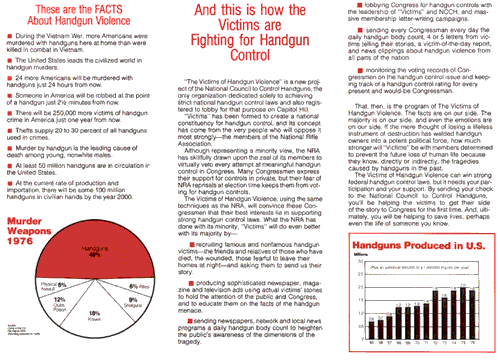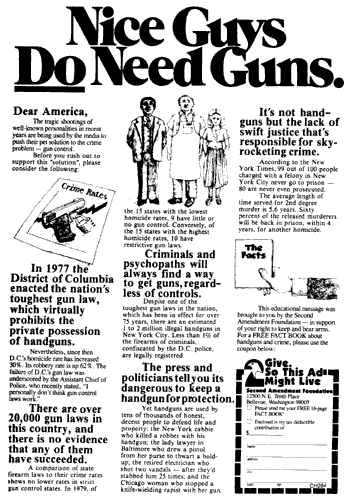|
Lesson Ideas |
Italicized links open a new window to an external site
Dueling Facts
Effective propaganda sometimes employs apparently reasoned argument. The charts, diagrams, and factual assertions in the samples below stand in contrast to the emotional appeals on display in Triggering Emotions. Still, these pieces are clearly propaganda because (on their own) they fail to encourage discussion, thought or exploration; instead leading the reader to pre-determined conclusions. In their book The Fine Art of Propaganda (beautifully summarized excerpts available at the Propaganda Analysis Home Page), Alfred and Elizabeth Lee called this type of propaganda "Card Stacking". Here the propagandist "stacks the deck", making it appear that all the facts support his side. Assuming for a moment that all of its assertions are indeed true (a big assumption), careful analysis may show that the inferences the propagandist knows you'll draw are not.
If your students are familiar with the factual verification skills introduced in Is That A Fact?, have them attempt to verify individual assertions in the pieces below (or simply to identify those that are unverifiable or those they believe to be true or untrue). You might then divide your class into small groups, assigning each a particular assertion for discussion. After giving the students time to work, have each group present the statement it examined, the evidence it found and the conclusion about the statement's veracity it drew. Then allow the class as a whole to discuss the statement and attempt to reach a consensus on it. (Ask groups of younger or less able students to see if a statement is verifiable, whether or not and why they believe it to be true, or what evidence might be available to support or debunk it.) Once they have verified, debunked or eliminated these assertions as unverifiable, you might have your students attempt to identify relevant facts (if any) that were left out of each piece because they might have destroyed the conclusion the authors wanted readers to draw.
If you would like to use more recent facts than those shown below, you can find them via the Web; although the basic arguments made by both sides are little changed since the pieces below were produced. The Brady Center offers a good collection, as does the National Center for Policy Analysis on the other side.
To print one of the images below, click on it. It will open in a new browser window. Use your browser's print command to print it from there; then close the standalone window, being careful not to exit your browser program.
 |
|
The
Brady Center to Prevent Gun Violence (formerly the National Council to Control Handguns) |
 |
| The Second Amendment Foundation |
return to the Face-off Over Guns page
return to the Propaganda in the Classroom page
copyright © 2002-2012
classroomtools.com. All Rights Reserved.
original web posting: Tuesday January 1, 2002
last modified:
Sunday, August 12, 2012